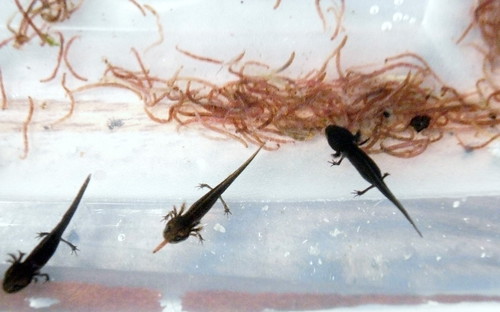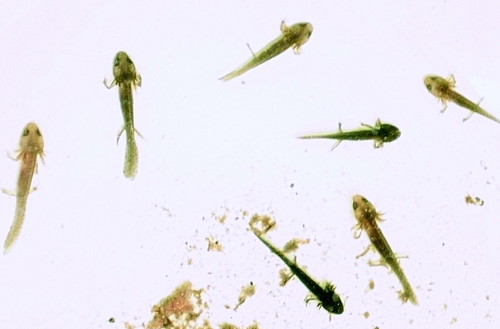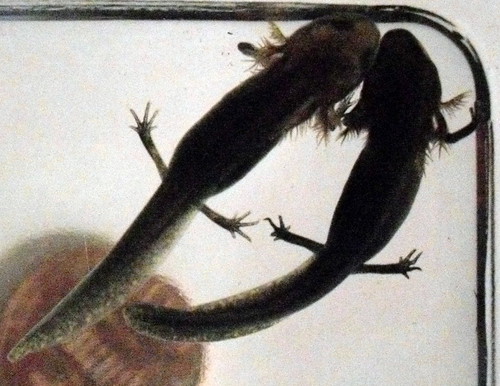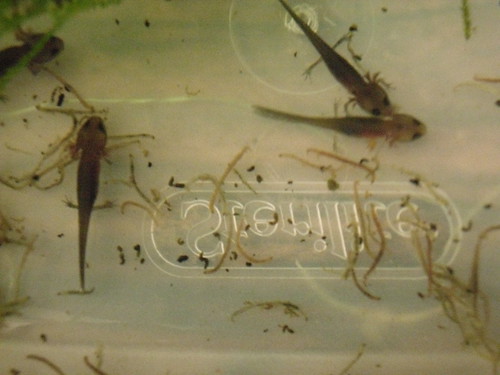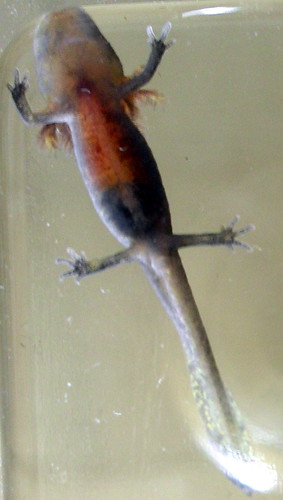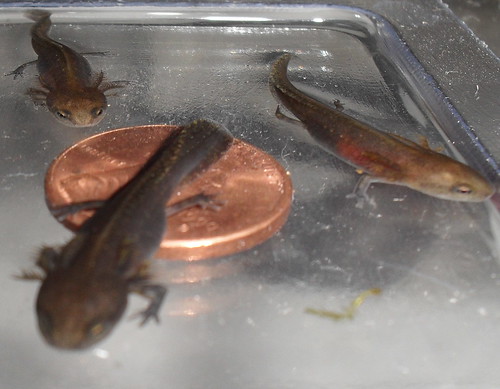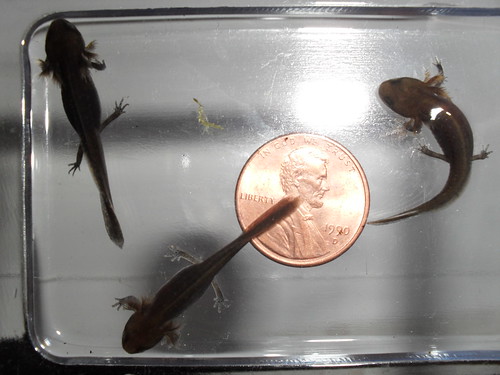SludgeMunkey
New member
- Joined
- Nov 11, 2008
- Messages
- 2,299
- Reaction score
- 79
- Points
- 0
- Location
- Bellevue, Nebraska
- Country
- United States
- Display Name
- Johnny O. Farnen
So my Cynops ensicauda popei are very near to morphing...I think.
(Forgive me, I am relatively new to species that go terrestrial)
While I have read tons about them, I am unclear on how to provide "land" for them at this stage.
They are about 2 inches long, give or take, and their gills are getting significantly smaller. I have noticed them swimming rapidly to the surface to take a gulp of air. (Not even sure if that is normal for this species) The largest of the colony tend to hang out very close to the surface on the java moss I have in their tanks.
Should I just add a floating island for now or should I lower the water level enough that the moss breaks the surface and provide a floating island? Or, should I go ahead and move them to a tank with a solid terrestrial section?
Any advice would be greatly appreciated.
(Forgive me, I am relatively new to species that go terrestrial)
While I have read tons about them, I am unclear on how to provide "land" for them at this stage.
They are about 2 inches long, give or take, and their gills are getting significantly smaller. I have noticed them swimming rapidly to the surface to take a gulp of air. (Not even sure if that is normal for this species) The largest of the colony tend to hang out very close to the surface on the java moss I have in their tanks.
Should I just add a floating island for now or should I lower the water level enough that the moss breaks the surface and provide a floating island? Or, should I go ahead and move them to a tank with a solid terrestrial section?
Any advice would be greatly appreciated.

